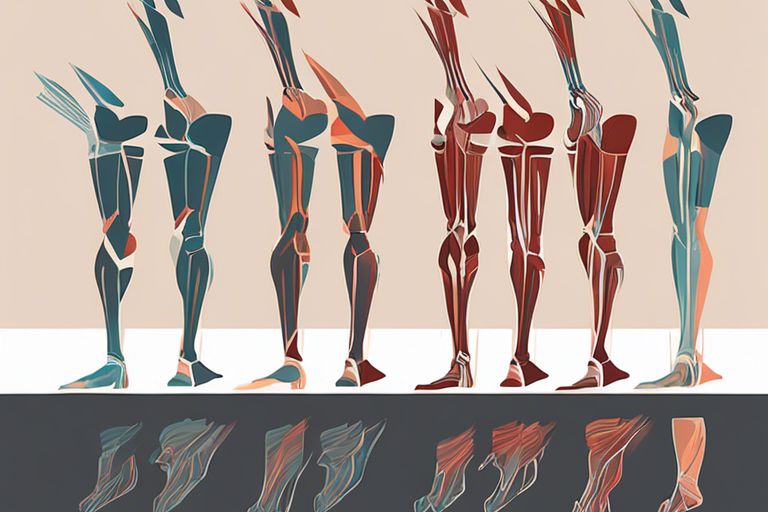While walking is an excellent form of cardiovascular exercise, it may not be enough to provide you with a full-body workout that targets all of your major muscle groups. You might be surprised to learn that walking alone may not be sufficient to build and maintain muscle strength and bone density. In this blog post, we will delve into the benefits and limitations of walking as a form of exercise, and explore whether it can truly serve as a comprehensive full-body workout.
Understanding Walking as Exercise
Before delving into whether walking is enough for a full-body workout, it’s important to understand the exercise itself. Walking is a low-impact activity that can be done almost anywhere, making it an accessible form of exercise for many people. It is an excellent way to improve cardiovascular health, strengthen muscles, and boost your overall sense of well-being. But is it enough to replace a full-body workout at the gym? Let’s explore.
What Constitutes a Full-Body Workout?
When you engage in a full-body workout, you are targeting all the major muscle groups in your body. This includes your legs, glutes, core, back, chest, arms, and shoulders. By doing exercises that work these muscle groups, you are able to build strength, improve muscle tone, and increase your overall physical fitness. So, when considering whether walking is enough for a full-body workout, it’s important to evaluate whether it engages all of these muscle groups effectively.
The Science of Walking: Muscles Engaged
While walking primarily targets the muscles in your lower body, such as your calves, hamstrings, and quadriceps, it also engages your core muscles to stabilize your body as you move. Additionally, swinging your arms while walking can help to engage the muscles in your upper body, including your shoulders and arms. However, it’s important to note that walking alone may not provide enough resistance to effectively challenge and strengthen all of the major muscle groups in your body.
In conclusion, while walking is a great form of exercise that offers numerous health benefits, it may not be enough on its own to constitute a full-body workout. To achieve a comprehensive full-body workout, you may want to consider incorporating other forms of exercise that specifically target different muscle groups. This will ensure that you are effectively challenging and strengthening all areas of your body, leading to a more balanced and well-rounded fitness routine.
The Benefits of Walking
While some people may underestimate the power of walking as a form of exercise, the truth is that it offers numerous benefits for your overall health. From improving cardiovascular health to aiding in weight management, walking can truly provide you with a full-body workout.
Cardiovascular Health
When you engage in brisk walking, you are giving your heart a great workout. Walking helps to increase your heart rate, improve circulation, and strengthen your heart muscles. This can contribute to lowering your risk of developing heart disease, reducing high blood pressure, and improving your overall cardiovascular health. By incorporating regular walks into your routine, you can significantly improve your heart health.
Weight Management and Metabolism
Regular walking can be an effective tool for managing your weight and boosting your metabolism. While it may not burn as many calories as more intense forms of exercise, such as running or cycling, it can still play a crucial role in helping you maintain a healthy weight. Additionally, walking can help to regulate your metabolism, making it easier for you to burn calories throughout the day. By making walking a regular part of your routine, you can support your weight management efforts and keep your metabolism in check.
Complementary Exercises to Walking
Your walking routine can be supplemented with other exercises to ensure a full-body workout. Incorporating strength training and core exercises can help improve your overall fitness and ensure that you are targeting all muscle groups.
Strength Training for Upper Body
Adding in some upper body strength training exercises like push-ups, dumbbell curls, and overhead presses can help tone and strengthen your arms, chest, and shoulders. This will complement the cardiovascular benefits of walking and help you build muscle mass. It is important to maintain proper form and start with lighter weights to avoid injury.
Core Exercises for Stability
Core exercises such as planks, Russian twists, and bicycle crunches can help improve your stability and balance. A strong core is essential for overall fitness and can also prevent lower back pain. By incorporating these exercises into your routine, you can improve your posture and reduce the risk of injury during physical activities.
Maximizing Your Walking Routine
Lastly, let’s talk about how you can maximize your walking routine to ensure that you are getting the most out of it. By incorporating some additional strategies, you can turn your regular walk into a full-body workout that targets various muscle groups and boosts your overall fitness level.
Incorporating Interval Training
If you want to take your walking routine to the next level, consider incorporating interval training into your walks. This involves alternating between periods of intense, fast-paced walking and periods of slower, more relaxed walking. By doing so, you can boost your cardiovascular fitness, increase your calorie burn, and challenge your muscles in new ways. For example, you can walk at a brisk pace for 3 minutes, followed by 2 minutes of leisurely walking, and repeat this pattern throughout your walk. This will keep your heart rate elevated and help you to reap additional fitness benefits.
Using Walking Poles and Weighted Vests
Another way to amp up your walking routine is to incorporate the use of walking poles or weighted vests. Using walking poles can help to engage your upper body muscles, including your arms, shoulders, and back, providing a more comprehensive full-body workout. Additionally, walking with a weighted vest can increase the intensity of your walk, challenge your muscles, and improve your overall strength and endurance. By adding these tools to your walking routine, you can maximize the effectiveness of your workout and take your fitness to the next level.
Is walking enough for a full-body workout?
Taking this into account, while walking is a great form of exercise and can provide numerous health benefits, it may not be sufficient for a full-body workout. To ensure that you are targeting all muscle groups and achieving a well-rounded fitness routine, incorporating strength training, flexibility exercises, and other forms of cardiovascular exercise alongside walking is ideal. By diversifying your workout routine, you can maximize the benefits of exercise and improve overall physical fitness.




